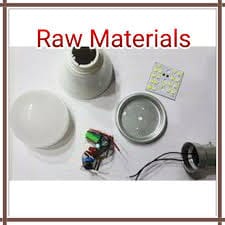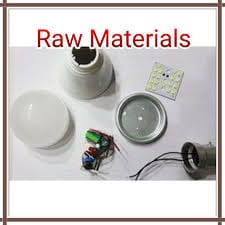LED Light


What is LED Light
A Light Emitting Diode (LED) is a semiconductor device that emits light when an electric current passes through it.occurs as electrons recombine with holes within the material, releasing energy in the form of photons. The color of the emitted light is determined by the energy band gap of the semiconductor material used.
Types Of LED Light :
LED lights come in a variety of types, each designed for specific applications and lighting needs. Here’s an overview of some common types:
1. LED Bulbs:


- Standard LED Bulbs (A19): These are the most common LED bulbs, designed to replace traditional incandescent bulbs in general lighting fixtures. They are suitable for lamps, ceiling fixtures, and other household uses.
- Reflector LED Bulbs (R, BR, PAR): Designed for directional lighting, these bulbs are ideal for recessed lighting, track lighting, and outdoor floodlights.
- Candelabra LED Bulbs: With a slender, flame-like shape, these bulbs are used in chandeliers, sconces, and other decorative fixtures.
2. LED Tube Lights:
- Type A (Ballast Compatible): Designed to work with existing fluorescent ballasts, allowing for a straightforward replacement without rewiring.
- Type B (Ballast Bypass): These require the removal of the existing ballast and direct wiring to the power source.
- Type C (External Driver): Utilize an external driver, similar to fluorescent tubes, offering dimming capabilities and longer lifespans.
- Type A+B (Hybrid): Versatile tubes that can operate with or without a ballast, providing flexibility in installation.
3. LED Strip Lights:
- SMD (Surface Mounted Diode) Strips: Flexible strips with surface-mounted LEDs, commonly used for under-cabinet lighting, accent lighting, and decorative purposes.
- COB (Chip on Board) Strips: Feature closely packed LED chips covered with a phosphor layer, producing a continuous, uniform light ideal for applications requiring a seamless glow.
- Side-Emitting Strips: Emit light from the side of the strip, suitable for edge lighting and applications where direct light is not desired.
4. High-Power LEDs:
These LEDs are designed to operate at higher currents and emit a significant amount of light, making them suitable for applications like street lighting, industrial high bay lighting, and automotive headlights.
5. Miniature LEDs:
Small LEDs used as indicators in electronic devices, available in various sizes and colors.
6. Filament LEDs:
Designed to mimic the appearance of traditional incandescent bulbs, filament LEDs have multiple LED filaments arranged to resemble the filament of an incandescent bulb, offering a vintage aesthetic with modern efficiency.
7. Smart LEDs:
Equipped with wireless connectivity, smart LEDs can be controlled via smartphones or smart home systems, allowing users to adjust brightness, color, and schedules remotely.
